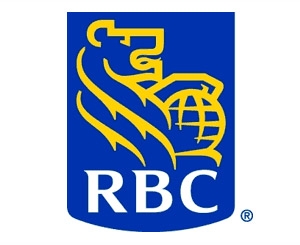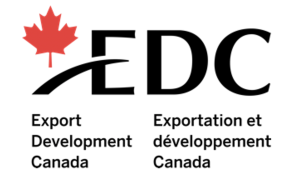Asia's Economic Rise: A View from North America
Remarks to the CCCJ-Kansai, March 15, 2006
Asia's Economic Rise: A View from North America
Good afternoon. It is a pleasure to be here, meeting with members of the Canadian Chamber of Commerce in Japan. I would like to thank Governor Tod Baudin for the invitation and Consul General David McLellan for suggesting my name to Mr Baudin. I would also like to thank the American Chamber of Commerce in Japan for co-sponsoring this event. I am in Osaka principally to attend a meeting of the Pacific Economic Cooperation Council (PECC) that is hosted annually by the Kansai Institute of Social and Economic Research. Each year, economic forecasters from PECC member economies gather to discuss the outlook for the Asia Pacific region. Later this year, we will release our findings in a new publication called the State of the Region. This new publication, which I coordinate, will consist of economic forecasts for the member economies of PECC as well as an analysis of issues that are important for the region as a whole. The two issues that we will focus on this year are the impact of oil price increases on Asia Pacific economies, and the implications of China's economic rise for regional policy cooperation.
I will be able to tell you more about the economic outlook after our meetings at the end of the week, but our preliminary forecasts suggest that the region is poised for another year of robust growth. The Asia Pacific region as a whole (including North America, Ecuador, Colombia, Chile, and Peru) will see around 4.6 percent real GDP growth in 2006, with East Asia alone growing by about 5.6 percent. Japan is expected to grow by a robust 2.8 percent in 2006, about the same as in 2005. China's growth shows no sign of slowing down, despite the recent talk in Beijing about putting less emphasis on GDP growth. The outlook is for 9.5 percent real growth in 2006. Inflation remains muted, at 2.3 percent for the region as a whole and just 2 percent for East Asia alone.
The economic outlook for the region, in a nutshell, is still very positive. Led by what seems like a durable Japanese recovery and insatiable Chinese demand for raw materials and intermediate inputs, the Asia Pacific region is booming again. The Asian financial crisis is becoming a distant memory. There are of course storm clouds in the horizon, in particular the twin deficits of the United States that have their counterpart in current account surpluses of Asian economies, as well as the fear of a sharp slowdown in China, due to overinvestment in real assets or a financial sector crisis.
It has become conventional wisdom to speak of Asia's economic rise. This is obvious for those of you here in the Kansai region, which trades heavily with the rest of East Asia. It is also increasingly obvious in British Columbia and Western Canada, which is experiencing the best economic performance in years, largely on the back of strong commodity prices due to robust demand from China. Last year, China became British Columbia's second most important trading partner, overtaking Japan. British Columbia is rapidly rediscovering its geography, as the closest destination in North America to most ports in Asia. You can save between 1-3 days by shipping from Asia to Vancouver or Port Rupert, compared with Long Beach in California.
Asia's economic importance is also recognized across central and eastern Canada, but in a slightly different way. The vast economic opportunity of rapidly growing markets in China and other parts of Asia is as much a topic of conversation as the threat of competition from Asian manufacturers, especially in China. Even if the competitive threat is not direct (and there are in fact very few industries in Canada that currently compete directly with China), the rise of the Canadian dollar, in part due to the strong resource sector -- has hurt manufacturing exports. In the industrial heartland of Ontario and Quebec, the number of manufacturing sector jobs has fallen in recent years. Previous job losses may have little to do with China, but the prospect of ever-increasing Chinese competitiveness strikes fear in the hearts of many manufacturers.Recently, Canadian producers of bicycles, barbeques, and furniture have filed for safeguards against rising Chinese imports in these three sectors.
The level of concern in Canada over Chinese competition is nowhere as high as it is in the United States. The US trade deficit widened to a record US$68.5 billion in January and the bilateral deficit with China grew 10 per cent from December to a new high of US$17.9 billion. Pressure is mounting in Congress for tougher actions against perceived unfair competition from China. In addition to safeguard actions against a range of Chinese exports, there is growing pressure on Beijing to further re-value the yuan, and considerable antipathy towards Chinese foreign direct investment in the United States. Even the generally pro-free trade administration of George W. Bush has been forced to take a tougher stand on China. A few weeks ago, USTR Robert Portman announced the results of what he called a 'top to bottom' review of China's trade practices. His overall conclusion is that , the US-China trade relationship today lacks equity, durability and balance in the opportunities it provides. The report has led to the creation of a China Enforcement Task Force at USTR, headed by a new Chief Counsel for China. The unprecedented degree of US government attention that will be given to enforcement issues in China will likely mean more trade conflict in the months and years ahead.
In Canada, businesses are responding to the rise of Asian economies in a variety of ways. The Asia Pacific Foundation of Canada's 2006 outward investment survey shows a record number of companies planning to increase their presence in Asia through direct investment. Two thirds of respondents plan to increase their investment in Asia over the next 12 months. This rises to an overwhelming 82% expecting to put more capital into the region over the next five years, with more than half expecting to boost their investment "substantially" over the longer period. This is a far higher proportion than recorded in any previous survey.
Overall, companies surveyed are more bullish on Asian investment than at any time in the 7 years that the Foundation has undertaken the study, with 30% of respondents expecting to boost their Asian holdings substantially in the coming year. Last year the comparable figure was 23%. None of the companies surveyed expected to reduce their Asian exposure in the coming year.
The rise of Asian economies, especially China, has begun to stir a debate on inward investment, especially in so-called 'strategic' sectors. In 2004, China Minmetals Corp. -- a state-owned company -- expressed interest in buying Noranda, a Canadian mining icon. The parties did not come close to a deal, but the publicity surrounding the discussions generated much anxiety on the part of economic nationalists who opposed ceding control of a strategic asset to a foreign government-owned entity. There was also opposition from China activists on the basis of Beijing's poor record on human rights and labour practices.
This debate evaporated when Minmetals announced that it was no longer pursuing Noranda, but it is likely to resurface if another Chinese state owned enterprise makes a major bid for energy assets in Canada, especially the oil sands of Alberta. In addition to economic nationalism and human rights concerns, there will be the added complication of continental energy security and American views on Chinese ownership of North American energy resources. The US Congress has given an insight to its views on foreign ownership of strategic assets in its opposition to CNOOC's proposed acquisition of UNOCAL in 2005, and more recently the sale of US port handling facilities to DB World of the United Arab Emirates.
Chinese investment in Canada has in fact risen very sharply in the last year, from about $5m in 2004 to $100m in 2005. The investments were in energy, manufacturing, and retail business. Relative to other sources of investment, however, these are very small numbers. The stock of Chinese foreign direct investment in Canada is less than 5 percent of Japanese foreign direct investment in Canada. Just this morning, we heard about another Japanese acquisition of a Canadian firm. Tokyo-based Pan Pacific Copper Co., Ltd. has reached an agreement to acquire all of the outstanding common shares of Vancouver-based Regalito Copper Corp. , a deal worth about US$137M. Interestingly, there is no debate around Japanese investment, which is almost uniformly seen as a positive for Canada. In fact, the biggest FDI announcement in 2005 was Toyota's planned investment in a new plant to be located in Woodstock, Ontario, worth an estimated $800m. China has a lot to learn from Japan about the management of outward investment. In fact, in the same way that Japan is positioning itself as a platform for North American firms to launch into NE Asia, Japan could well position itself also as a platform for Chinese firms to launch into North America. Our research on Chinese outward investment suggests that many Chinese firms are keen to expand their presence overseas, but do not have a good understanding of how to go about it. Japan can be a source of ideas, contacts, partnerships, and dealmaking for Chinese companies looking to be world players.
Recently, federal and provincial governments in Canada have also become Asia enthusiasts. The previous Liberal government emphasized the importance of emerging markets in Asia (especially India and China), launched an economic framework agreement with Japan, and announced the start of a 'strategic partnership' with China. Provincial premiers have been lining up to travel to China, and to a lesser extent India, in the hope of generating new business abroad and winning support from the large Asian ethnic communities back home. The Government of British Columbia has created a Ministry responsible for what has been called the 'Asia Pacific Initiative' and has established an Asia Pacific Trade Council, which reports directly to the Premier.
The most important initiative of the last six months, however, is the Pacific Gateway Strategy. In the dying days of the Liberal government, a Pacific Gateway bill was tabled in Parliament. It included $600m to improve port and transportation facilities in British Columbia and the creation of a 'gateway council' to facilitate other activities related to the creation of a national Pacific gateway strategy. Tantalizingly, this bill made it past two readings of the house before the election writ put an end to its short life.
With the election of a Conservative minority government, the fate of the Pacific Gateway strategy was at first unclear. But the defection of David Emerson to the Conservative Party and his appointment as Minister for International Trade and the Pacific Gateway Strategy suggests that there will be continuity on this issue. A new bill on the Pacific Gateway is being drafted as we speak. It will almost certainly retain the infrastructure elements of the previous bill but it is less clear if the new bill will include a vision of a national strategy that goes beyond ports, road, and rail, and which extends to central and eastern Canada, in addition to the west coast.
There is no question of the need for better port and transportation infrastructure on the west coast, in order to cope with the larger volumes of cargo that are projected to cross the Pacific Ocean. But a larger port alone will not create deeper and broader links across the Pacific. For one thing, final demand for products from Asia is not in the west coast, but in the more populous regions of central Canada and the American mid-west. The receptivity and openness of markets to Asian imports cannot be taken for granted. The Gateway Strategy has to include business development, training and education, and cultural activities as part of a wider effort to raise awareness about Asia throughout Canadian society. It is telling that in a national opinion poll conducted by the Asia Pacific Foundation of Canada, over 70 percent of British Columbia residents agreed with the statement 'Canada is part of the Asia Pacific region'. In Ontario and Quebec, however, that number fell to around 30 percent. Until and unless Canadians include Asia in their mental maps, the Pacific Gateway will be just another portal.
Let me conclude with a few words on Canada-Japan relations. By most accounts, the state of bilateral ties is very comfortable. Perhaps too comfortable. With few disputes to speak of, Canada-Japan relations have become complacent. We have not had an official visit by either Prime Minister in six years, and bilateral business associations (with the happy exception of the Canadian Chamber of Commerce in Japan) have withered. China has recently overtaken Japan as Canada's number #2 trading partner. While this is in itself is not problematic for the bilateral relationship, it is emblematic of a broader perception in Canada that Japan is a fading power.
Whereas most Canadians know about China's spectacular economic rise, many are not aware of the economic recovery in Japan or about the relative size and wealth of the two economies. Our national opinion poll found a surprisingly high number of respondents who believe that the Chinese economy will be bigger than Japan's by 2010. This is an economic fantasy that has been fed in part by lopsided media reporting in the western press.
I am often surprised by many colleagues in the business community who are bullish on Asia in general and China in particular, but who seem to have a view of Japan that is at least 10 years out of date. They will look to China and India for commercial opportunities while neglecting the wealthiest and most sophisticated market in Asia. This is especially surprising when you consider that the most promising areas of Canadian export, leaving aside commodities, are in the services sector. The market for high-end services is by definition high-end consumers, which Japan can offer.
There are two initiatives underway that give me hope in a renewed Canada-Japan economic relationship. The first is the Canada-Japan Economic Framework Agreement signed by then-PM Paul Martin and Junichiro Koizumi. The agreement includes a 'study group' consisting of government officials who will look at ideas and options for closer economic relations, including the prospect of a bilateral Free Trade Agreement. They will be supported by the work of the Canada- Japan Forum, which consists of senior private sector representatives appointed by the two governments in 2004. The Forum is expected to complete its work in the summer and to present its results to the respective Prime Ministers shortly after.
The rise of Asia has become an important issue in Canada, but not important enough yet to change some long-ingrained habits and instincts of Canadian business and government. There is a tendency in Canada to look for quick fixes in improving our relations with Asia, a trade mission here, infrastructure investment there, some studies, more committees, etc. If Asia's rise is for the long-term, however, Canada will have to respond is a more systemic way. It will mean no less than changing the mental maps of Canadians, so that the Asia Pacific is as much a part of Canada as Canada is a part of the Asia Pacific.




























